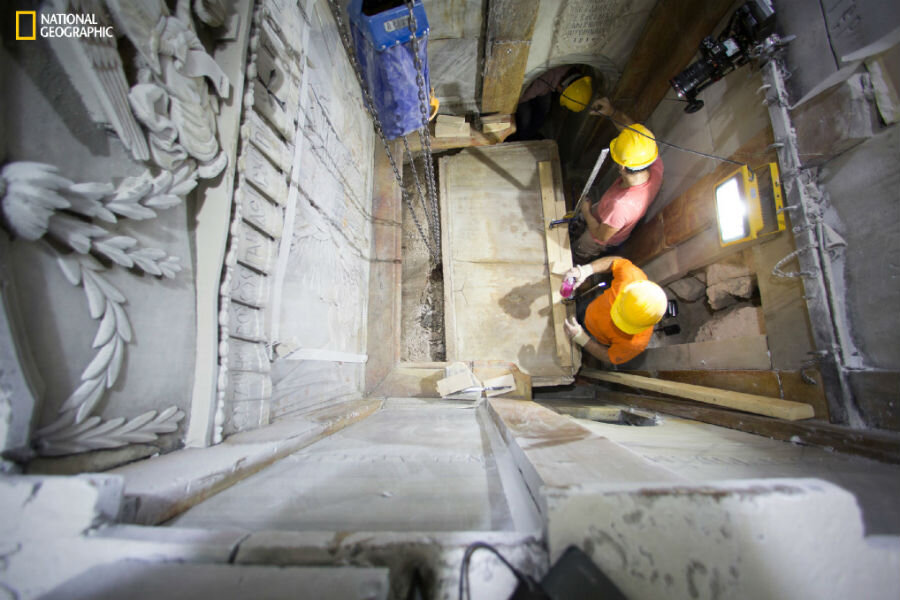Researchers open what they think may have been Jesus’ tomb
Loading...
Future pilgrims to the Church of the Holy Sepulchre will be able to glimpse what is, according to tradition, the tomb of Jesus.
It’s all thanks to a team from the National Technical University of Athens, which is undertaking critical repair work on the site. The team started excavating the tomb on Wednesday, in an effort to uncover the original limestone slab on which Jesus was supposedly laid.
The project is, according to National Geographic, a $4 million effort to restore the Edicule, the building that sits atop the grave believed to have held the body of Jesus.
“It will be a long scientific analysis, but we will finally be able to see the original rock surface on which, according to tradition, the body of Christ was laid,” said Fredrik Hiebert, archaeologist-in-residence at the National Geographic Society, a partner in the restoration project.
The history of the Edicule goes all the way back to Constantine, the first Roman Emperor to convert to Christianity. After conversion, he reportedly dispatched his mother, Helena, to Jerusalem, where locals pointed out a cave believed to be the site where Jesus lay for three days after his crucifixion. According to Christian tradition, he was resurrected after that time and later ascended.
Helena reported the location to Constantine, who constructed the original Edicule (from the Latin meaning “little house”) over the cave to mark the spot for future generations. That building has long since been destroyed, and over the years, the cave was covered with layers of marble.
On any given day, pilgrims line up, hoping for the opportunity to crouch by these marble slabs in the most recent Edicule, constructed between 1810 and 1812.
The three religious groups that control the site have long agreed that the building needed critical repairs, but it has taken more than half a century to line up funding and determine the best course of action. Badly damaged by humidity and candle smoke over the years, it is currently supported by a huge iron girders installed by the British in 1947.
The current plan is to shore up the foundations of the building by injecting mortar around them. But radar tests have revealed that the original cave walls – believed by many to be long gone – are still standing. That means the restoration team has to excavate the original tomb of Jesus, in order to ensure that no mortar gets into the limestone.
Researchers say it’s an unprecedented opportunity to study one of the most sacred sites in Christianity.
“The techniques we’re using to document this unique moment will enable the world to study our findings as if they themselves were in the tomb of Christ,” chief scientific supervisor, Antonia Moropoulou, told National Geographic. A new program on National Geographic will reveal the process to viewers next month.
And future visitors will also get a view of the tomb that hasn’t been available since Constantine’s day: The team cut a hole in one wall of the Edicule on Thursday, making it possible to see all the way down to the cave.








